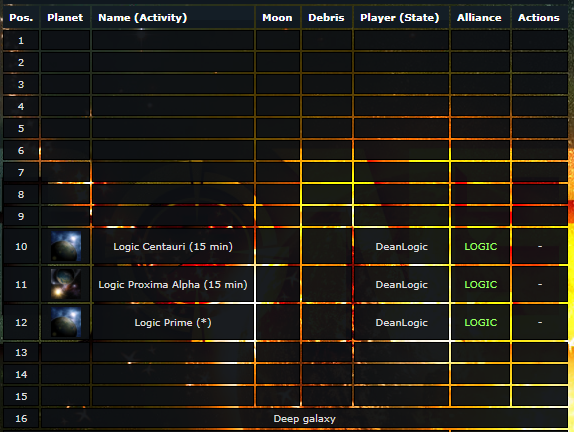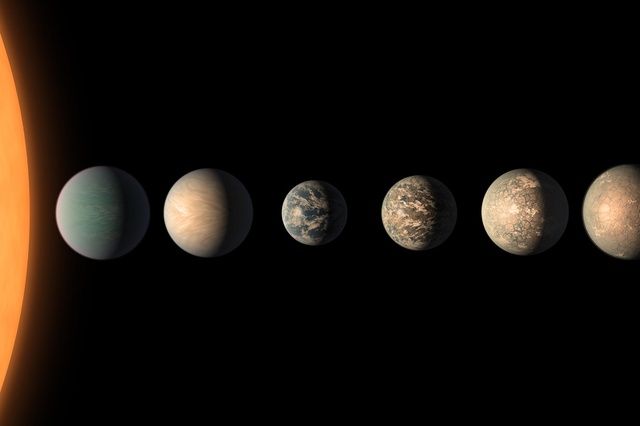Colonizing Planets to Increase Resources
It has been two weeks since I started playing SteemNova, an oGame based space strategy game using the 2Moon system.



After you have upped your Expedition Research to the appropriate level and built your colony ship, then you must search for a planet to colonize. In general, this is pretty simple, because you should just pick an opening next to your main planet.
First of all, there is some confusion in the naming. Each player has their own Galaxy, which has 16 slots. The 16th slot is the Deep galaxy and is for when you have so much resources you don’t know where to spend them, I guess. But, when you look on the Galaxy page, it says that it is your system. It makes more sense that you have 1 star system with 15 planets and your system is in the galaxy that everyone is playing in and the overall universe of oGame. But, how things are setup, you build in your Galaxy, which is part of the Universe and there are multiple Universes you can play in, even though SteemNova only has one available.


Each slot has a range of planet size and most likely player will start out with a planet about equal size. I’m guessing the random slot chooser tries to keep players from starting out in 1,2,3,13,14 or 15 since those would be smaller planets. The planet sizes are represented as Fields.
The Planet Size is the amount of fields a planet has to build on. The more fields there are, the more structures can be built. When you run out of available fields, you cannot build any more structures
- Logic Prime: 12.767 km (88 / 163 Fields)
- Logic Proxima Alpha: 12.247 km (53 / 150 Fields)
- Logic Centauri: 14.730 km (24 / 217 Fields)
Logic Centauri is my largest planet and my 2nd planet to colonize. Which means I can build a lot of things on it before I have to worry about building a Terraformer in order to increase the number of fields on the planet. Since 163 Fields is for my Main planet, getting too far below 150 Fields would be of concern. But, as the chart shows, if I stick to the inner planets, then I have a good chance of getting a average to large sized planet to colonize. I won’t need to worry about smaller planets until I get to slot 5. Something like Logic Octavian or something. Since I have to keep doubling the Expedition Research levels, that’s a long long long way off.
Once you colonize a planet, you don’t have to worry about starting completely from scratch. Your Research and Officer bonuses remain. However, you need to build a Research Lab and Ship Yard to start benefiting. The quickest way to build up your colonies is to send ships of resources, but that is also part of the strategy of what to spend where.
If you would like to join us on SteemNova and try to share in the payouts, come on over, it’s free!
This article was also posted on my Steemit blog.
About DeanLogic
Dean has been playing around with programming ever since his family got an IBM PC back in the early 80's. Things have changed since BASICA and Dean has dabbled in HTML, JavaScript, Action Script, Flex, Flash, PHP, C#, C++, J2ME and SQL. On this site Dean likes to share his adventures in coding. And since programming isn't enough of a time killer, Dean has also picked up the hobby of short film creation.


